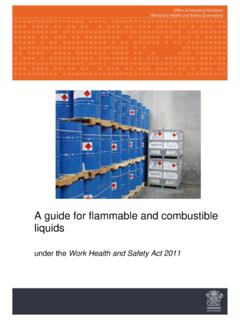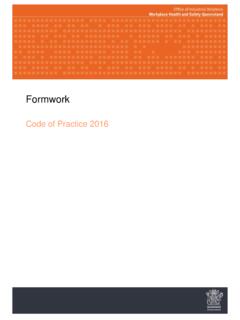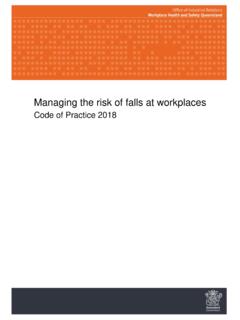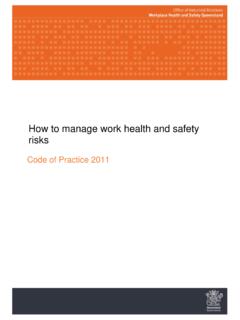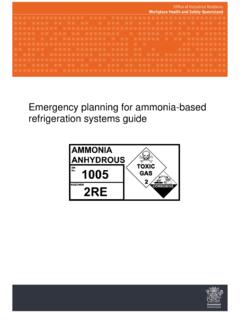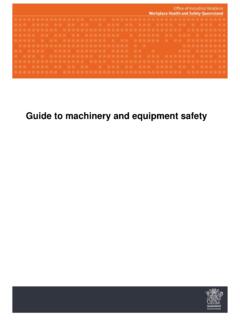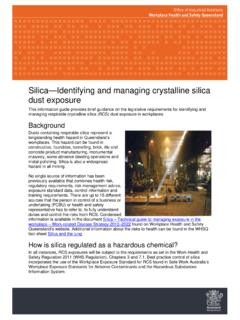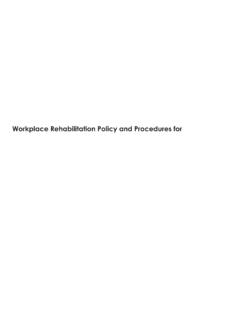Transcription of Fit-testing requirements for tight fitting respirators
1 Facial hair and respiratory protectionWorkers must take all necessary steps to ensure the proper fit and use of respirators . When wearing tight - fitting respirators , workers must ensure an effective face seal. This means being clean-shaven or only having facial hair that doesn t interfere with the fitting surfaces and the valve of the respirator. For workers who want to keep facial hair that may interfere with the operation or proper fit of tight - fitting respirators , a powered air purifying respirator with a loose hood will provide the protection needed. What to expect from an inspectorInspectors will take enforcement action where a person conducting a business or undertaking has provided tight - fitting respirators to workers without undertaking Fit-testing and/or facial hair is likely to prevent the seal of the respirator to the requirements for tight - fitting respiratorsOffice of Industrial Relations Workplace Health and Safety QueenslandAEU18/5844 Many common types of respirators are tight - fitting where performance relies on a good seal between the respirator and the wearer s face.
2 If there isn t a good seal, contaminated air will leak into the respirator and the wearer may not get the level of protection that is needed to protect their health. Note: Everyone s face is a different size and shape so there is no one size fits all . Workers must pass a respirator fit-test before they first start wearing a tight - fitting respirator. Fit-testing measures the effectiveness of the seal between the respirator and the wearer s face. It is required for all tight - fitting respirators , including: half-face disposable half-face reusable full-face reusable tight - fitting powered air purifying respirators (PAPR).
3 There are two methods of Fit-testing that meet AS/NZS1715:2009 Selection, use and maintenance of respiratory protective equipment: Qualitative a pass/fail test that relies on the wearer s ability to taste or smell a test agent. This type of test can only be used on half-face respirators . Quantitative uses specialised equipment to measure how much air leaks into the respirator. This type of test can be used on half-face respirators , full-face respirators and Fit-testing results are more objective than qualitative testing because some workers have difficulty with their ability to taste or smell.
4 This can result in a potential for a false pass to the qualitative fit-test and worker health not being adequately protected. Full-face respirators and PAPR must be fit-tested using the quantitative Fit-testing must be carried out by a competent in-house person, manufacturer, supplier or consultant: before wearing a tight - fitting respirator for the first time each time a new make or model of respirator is issued whenever there is a change in the wearer s facial characteristics or features which may affect the facial seal ( large weight loss or gain). Fit-testing should be repeated on a regular basis based upon risk assesment ( every one or two years).
5 Note: Facial hair that lies along the sealing surface of a tight - fitting respirator will stop it sealing properly. Fit-testing must be carried out on males who are clean-shaven or have no hair between their face and the fitting surfaces of the respirator face a written record of fit-tests carried out for each worker, including the: type of test performed make, model, style and size of respirator tested date and result of the workers with a fit-test record card after is a quick check to ensure the respirator, which has already been fit-tested, has been properly positioned on the face and there is a good seal between the respirator and face.
6 Each time a tight - fitting respirator is put on, the wearer should carry out a fit check, following the manufacturer s instructions. A fit-check does not replace the need for a more information visit: and search AS/NZS 1715 and search respiratory protective equipment
